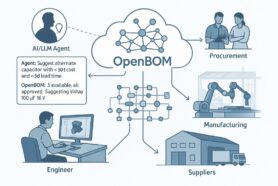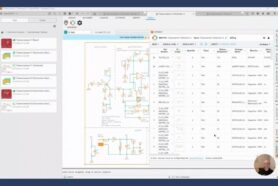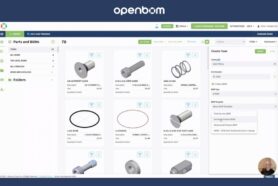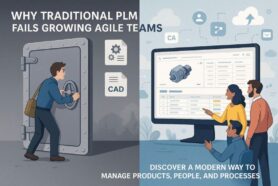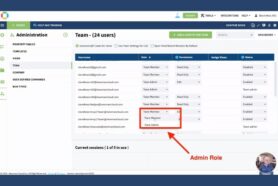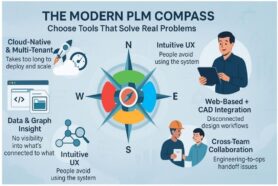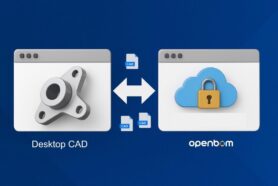
In the realm of product development and manufacturing, Excel remains a familiar fixture. It’s not uncommon to find a bill of materials (BOM) intricately laid out in those iconic rows and columns, testifying to Excel’s widespread appeal. Speaking with many manufacturing companies, we can still see Excel’s widespread use. However, the shift is happening. Many companies come to OpenBOM and acknowledge that although Excel is a common tool, they understand that you cannot run your manufacturing business using Excel. As the manufacturing industry accelerates toward digitalization, Excel’s popularity comes with a caveat. For all its versatility, Excel introduces substantial risks when managing data integral to product development, manufacturing resilience, and compliance.
The very features that make Excel accessible and flexible can sometimes be the chinks in a company’s armor, potentially hindering progress in our increasingly digital age.
OpenBOM – Excel Paradigm with Modern Online Database
At OpenBOM, we’ve been inspired by the simplicity of Excel and the collaboration of Google Spreadsheets and decided to bring an alternative to all engineers managing Bill of Materials (BOM) using old fashion Excels. We took the user experience paradigm and put a powerful product lifecycle management (PLM) data management foundation with modern data management tools, cloud applications, and SaaS business models.
What we’ve got is a tool that is capable of managing product data (BOM) with the simplicity of Excel, but includes all the power of structured product lifecycle management, attributes, lifecycle, integration with engineering tools, calculations, and customization.
Check OpenBOM reviews on G2 and learn OpenBOM customer stories. They will give an understanding of the idea of OpenBOM and the user experience we provide to our customers.
Here is one of my favorite quotes from the G2 reviews:
“A refreshingly simple way to introduce a single source of truth.”
OpenBOM’s ability to generate bills of material is/will be helping us immensely. The catalog provides a single living space for all parts and assemblies and links individual categorical information, promoting an organized and searchable database. The automatic drawing-to-PDF feature is convenient and saves us a ton of time. And the ability to track revisions across drawings truly makes OpenBOM Iron Man of the Avengers.
5 Top Differentiators of Using OpenBOM To Manage Product BOM
If you need to manage Bill of Materials and related product data and already decided on Excel as a default, here are 5 reasons why OpenBOM will stand out for its distinct features that cater to a range of BOM management needs. Let’s dive into the top differentiators that make OpenBOM a game-changer for BOM management.
- Single Source of Truth for Items: OpenBOM ensures consistency and integrity in your data. Every item can be defined with an extensive list of attributes, including images, files, links, costs, and more. The beauty lies in the reusability of these items. Unlike copy/paste data in Excel, OpenBOM gives you the power of reuse. By updating an item in one place, it reflects the changes in all associated BOMs, eliminating redundancy and ensuring data consistency.
- Preserved Attachments: Whether it’s CAD files, images, PDFs, or any other type of attachment, OpenBOM safeguards your data by preserving it alongside the respective items. This integrated approach ensures that crucial data doesn’t get misplaced or overlooked, and relevant information is always at your fingertips. Also, OpenBOM generates all these derivatives automatically and attaches them to the BOM.
- Multi-Level Structure & Modular BOM Re-use: Complex products often require multi-level BOMs that detail sub-assemblies and their components. OpenBOM enables you to create these intricate hierarchies, and further, allows for the modular reuse of BOMs. This means sections of one BOM can be reused in another, enhancing flexibility and reducing manual work.
- Instance, Quantity, Flattened BOMs: Different stages of production or analysis might require you to view BOMs in different formats. OpenBOM allows for this flexibility. You can organize information as per instance, by quantity, or even get a flattened view of the BOM. This adaptability ensures that you always have the right view to suit your current needs.
- Revision Control & History of Changes: As products evolve, so do their BOMs. OpenBOM keeps track of every change, ensuring that you have a clear revision history. This is invaluable for auditing, troubleshooting, and understanding the product’s evolution.
A Few Extras from Cloud/SaaS modern applications:
- Cloud-Based Accessibility: OpenBOM is available online, meaning you can access your BOMs from anywhere, anytime. This is especially handy for teams spread across different locations or for professionals on the move.
- Instant Sharing & Collaboration: The platform is designed for collaboration. Share your BOMs instantly with colleagues, suppliers, or other stakeholders. Work together seamlessly and in real-time, accelerating the product development process
Conclusion:
While spreadsheets like Excel have their advantages, they often fall short in handling the intricacies of BOM management. OpenBOM fills this gap, providing an intuitive, powerful, and comprehensive solution for managing product information. Its blend of unique features ensures that businesses have all the tools they need to manage BOMs efficiently.
If you’re looking for a hassle-free, effective way to manage your product information, it’s time to give OpenBOM a try.
REGISTER FOR FREE and embark on an instant 14-day trial. Experience the difference firsthand!
Best, Oleg
Join our newsletter to receive a weekly portion of news, articles, and tips about OpenBOM and our community.





